Fish Fork canyon June 24 - June 26 2011
Posted: Mon Jun 27, 2011 4:33 pm
If you ask a canyoneer why they got into the sport, almost all will list their primary motivation as seeing places that are otherwise inaccessible. The more inaccessible, the better. So when Taco and Zach found Fish Fork last September, it got a lot of people salivating.
Fish Fork drains from the slopes of Mt. Baldy and Iron mountain into the upper reaches of the East Fork San Gabriel River, all of it designated Wilderness and home to our remaining bighorn sheep herds. There are no roads, and there are few trails. Taco and Zach found some old webbing anchors, so they were not the first in the canyon, but it's likely you could count on both hands the number of humans who have ever been through the whole thing.
Planning this trip took several weeks. The start and finish locations had to be scouted, and gear carefully considered. You can't bring gear for every possible situation because the pack weight would make travel impossible, and besides - you can't imagine every situation anyway. We chose sleeping bags, foam pads, harness, helmet, 3x the longest rappel of rope (80'), about 100' of webbing, full wetsuits, and 8 rap rings. We didn't carry water, because there was plenty of that all along the way. The group was 6 people - myself, Ryan, Kirk Belles, Randy Worth, Dominik Nadolski, and Randy's girlfriend Anouk (I'm sorry, I don't know her last name). I felt badly when most people in the group asked if they could bring friends, and I said no since I needed to personally know and trust everyone's abilities. Also, speed is very important and the more people there are, the slower we all go. I know a lot of people want to see this place, but it's not a trip down Rubio. Screw up here and you're probably dead.
Onto the good stuff. Friday afternoon we set up a car shuttle between Vincent Gap (our exit) and Lupine Camp. We hiked from Lupine to Upper Fish Fork camp, passing Little Fish Fork camp along the way. The trail was difficult to follow in places, but we had Matt Maxon's GPX track (THANKS Matt!) so we got there quickly. The views toward Baldy and into Fish Fork were stunning. We set up camp and had a leisurely evening joking around the campfire, listening to the water rush by.
Saturday morning we didn't feel a sense of urgency. We should have. We got moving around 8:30am. Walking along the stream here is relatively easy, and gave us a false sense of "well this isn't so bad!". Right around the first bend in the canyon we discovered a bighorn ram skeleton, complete with skull and full-curl horns. We lashed the skull to my backpack.
The first couple of rappels are beautiful and relatively easy. I wanted to list each rap with coordinates, but my GPS lost signal quickly so I only got the first two. Anyone wanting specific details about the height and configuration of raps can contact me, but we also thought it prudent not to list this as a "paint by numbers" sort of place.
By the second rap, Bill the Bighorn was feeling super heavy, and smelling like wet rotten lambchops, so he found his final resting place on a wedged log over a pool below the second rappel. We continued through spectacular narrows with some small slides, jumps and downclimbs. The third rappel is a tricky one, with strong current and an awkward start. Randy went down first, struggled with the water flow, and quickly rigged a guide line for the rest of us.
The sections between rappels here are not too tough. Just slippery, so footing is important. We had lunch in the sun, had a beautiful rappel into a nice pool, then a very long time of hiking leading up to the "big" rappel with the strong hydraulic that caused problems for Zach and Ryan. We were tired and cold when we got to this point. We took time to look for an anchor that would keep us out of the pool, but there were no good ones. We pre-rigged a haul system and decided to send our strongest swimmer, Randy, down without his pack. If he could swim out of the pool, he could anchor or hold a handline of sorts that others could use to pull themselves out. If he couldn't, we could pull him back up with the haul system.
Randy made it out. We sent all our packs down first. Dominik was second, and could not swim out of the pool himself. Randy swam out to help him, then Dominik became the anchor for the pull line. The rest of us got down easily with this system. The waterflow here was stronger than it was last September, and the waterfall is very intimidating. The noise drowns out all but the loudest whistle blasts.
After this triumph, we were all a bit jazzed (and even colder). We hiked a bit further, came to one more short rappel, then made a group decision to find a camp for the night as we were starting to stumble and it was getting dark. Ryan was concerned because he knew how much more canyon there was to go before we exited at the East Fork. We decided to eat and go straight to bed, and start as early as possible on Sunday.
Sunday morning we got moving by 6:45am (not bad for 6 tired people having to put on cold, wet wetsuits and shoes and then go stumbling around in cold water). We had three more rappels which we all said would have been incredibly fun if it was a nice warm day and we didn't have many hours of hard travel ahead.
The last 2.5 hours was the toughest. We slipped and struggled over large boulders, attempted to find shortcuts on dry land only to be turned back by fallen logs, buckthorn, and poison oak. I was glad I had my hiking poles here. They helped tremendously, and were worth the weight. The canyon is still pretty here, but we were walled in by alder trees so we didn't have the eye candy of dramatic granite walls to entertain us. Morale was low.
We got to Lower Fish Fork camp a bit ahead of our prediction, and felt much better knowing the really tough stuff was behind us. Going upstream from there isn't a walk in the park, but there are long stretches of dry land free of vegetation. It was hot. No one talked much. As we got close to Mine Gulch and knew we'd be making it out that afternoon, we took many breaks and joked around some more, proud of what we had accomplished. We met Prospecter Dave at his humble home on a pine covered bench, complete with a fence keeping out the bears. He showed us the beautiful hand carved pipes he makes, and photos of gold nuggets he pulled out of places he kept secret. Once more break at the old glider wreck in Vincent Gulch, and we headed up to the cars. A tough 3 miles when you feel you have no energy left, but nice to be on a real trail.
All smiles back at the cars from some worn out, but proud canyoneers. I feel so lucky to know these people and rely on each of your skills - technical, physical, and mental. That we laughed so much while getting repeatedly whacked in the shins with tree branches says a lot. I can't find words to express how thankful I am that this trip of a lifetime was accomplished.
Serious Disclaimer - if you want to go here, first of all you probably shouldn't. If you insist, you need one very strong swimmer (triathlete type), at least one expert in complex rigging and rescue techniques, and a lot of time and strength. Do not go in early spring. Do not go in winter. Do not go without a rescue beacon. Do not take your buddy who "has done some climbing before". I'm never this assertive, because I don't like to seem snobby or hurt anyone's feelings, but this place is serious.
Now what everyone really wants - the PICS!
http://s484.photobucket.com/albums/rr20 ... ne%202011/







Fish Fork drains from the slopes of Mt. Baldy and Iron mountain into the upper reaches of the East Fork San Gabriel River, all of it designated Wilderness and home to our remaining bighorn sheep herds. There are no roads, and there are few trails. Taco and Zach found some old webbing anchors, so they were not the first in the canyon, but it's likely you could count on both hands the number of humans who have ever been through the whole thing.
Planning this trip took several weeks. The start and finish locations had to be scouted, and gear carefully considered. You can't bring gear for every possible situation because the pack weight would make travel impossible, and besides - you can't imagine every situation anyway. We chose sleeping bags, foam pads, harness, helmet, 3x the longest rappel of rope (80'), about 100' of webbing, full wetsuits, and 8 rap rings. We didn't carry water, because there was plenty of that all along the way. The group was 6 people - myself, Ryan, Kirk Belles, Randy Worth, Dominik Nadolski, and Randy's girlfriend Anouk (I'm sorry, I don't know her last name). I felt badly when most people in the group asked if they could bring friends, and I said no since I needed to personally know and trust everyone's abilities. Also, speed is very important and the more people there are, the slower we all go. I know a lot of people want to see this place, but it's not a trip down Rubio. Screw up here and you're probably dead.
Onto the good stuff. Friday afternoon we set up a car shuttle between Vincent Gap (our exit) and Lupine Camp. We hiked from Lupine to Upper Fish Fork camp, passing Little Fish Fork camp along the way. The trail was difficult to follow in places, but we had Matt Maxon's GPX track (THANKS Matt!) so we got there quickly. The views toward Baldy and into Fish Fork were stunning. We set up camp and had a leisurely evening joking around the campfire, listening to the water rush by.
Saturday morning we didn't feel a sense of urgency. We should have. We got moving around 8:30am. Walking along the stream here is relatively easy, and gave us a false sense of "well this isn't so bad!". Right around the first bend in the canyon we discovered a bighorn ram skeleton, complete with skull and full-curl horns. We lashed the skull to my backpack.
The first couple of rappels are beautiful and relatively easy. I wanted to list each rap with coordinates, but my GPS lost signal quickly so I only got the first two. Anyone wanting specific details about the height and configuration of raps can contact me, but we also thought it prudent not to list this as a "paint by numbers" sort of place.
By the second rap, Bill the Bighorn was feeling super heavy, and smelling like wet rotten lambchops, so he found his final resting place on a wedged log over a pool below the second rappel. We continued through spectacular narrows with some small slides, jumps and downclimbs. The third rappel is a tricky one, with strong current and an awkward start. Randy went down first, struggled with the water flow, and quickly rigged a guide line for the rest of us.
The sections between rappels here are not too tough. Just slippery, so footing is important. We had lunch in the sun, had a beautiful rappel into a nice pool, then a very long time of hiking leading up to the "big" rappel with the strong hydraulic that caused problems for Zach and Ryan. We were tired and cold when we got to this point. We took time to look for an anchor that would keep us out of the pool, but there were no good ones. We pre-rigged a haul system and decided to send our strongest swimmer, Randy, down without his pack. If he could swim out of the pool, he could anchor or hold a handline of sorts that others could use to pull themselves out. If he couldn't, we could pull him back up with the haul system.
Randy made it out. We sent all our packs down first. Dominik was second, and could not swim out of the pool himself. Randy swam out to help him, then Dominik became the anchor for the pull line. The rest of us got down easily with this system. The waterflow here was stronger than it was last September, and the waterfall is very intimidating. The noise drowns out all but the loudest whistle blasts.
After this triumph, we were all a bit jazzed (and even colder). We hiked a bit further, came to one more short rappel, then made a group decision to find a camp for the night as we were starting to stumble and it was getting dark. Ryan was concerned because he knew how much more canyon there was to go before we exited at the East Fork. We decided to eat and go straight to bed, and start as early as possible on Sunday.
Sunday morning we got moving by 6:45am (not bad for 6 tired people having to put on cold, wet wetsuits and shoes and then go stumbling around in cold water). We had three more rappels which we all said would have been incredibly fun if it was a nice warm day and we didn't have many hours of hard travel ahead.
The last 2.5 hours was the toughest. We slipped and struggled over large boulders, attempted to find shortcuts on dry land only to be turned back by fallen logs, buckthorn, and poison oak. I was glad I had my hiking poles here. They helped tremendously, and were worth the weight. The canyon is still pretty here, but we were walled in by alder trees so we didn't have the eye candy of dramatic granite walls to entertain us. Morale was low.
We got to Lower Fish Fork camp a bit ahead of our prediction, and felt much better knowing the really tough stuff was behind us. Going upstream from there isn't a walk in the park, but there are long stretches of dry land free of vegetation. It was hot. No one talked much. As we got close to Mine Gulch and knew we'd be making it out that afternoon, we took many breaks and joked around some more, proud of what we had accomplished. We met Prospecter Dave at his humble home on a pine covered bench, complete with a fence keeping out the bears. He showed us the beautiful hand carved pipes he makes, and photos of gold nuggets he pulled out of places he kept secret. Once more break at the old glider wreck in Vincent Gulch, and we headed up to the cars. A tough 3 miles when you feel you have no energy left, but nice to be on a real trail.
All smiles back at the cars from some worn out, but proud canyoneers. I feel so lucky to know these people and rely on each of your skills - technical, physical, and mental. That we laughed so much while getting repeatedly whacked in the shins with tree branches says a lot. I can't find words to express how thankful I am that this trip of a lifetime was accomplished.
Serious Disclaimer - if you want to go here, first of all you probably shouldn't. If you insist, you need one very strong swimmer (triathlete type), at least one expert in complex rigging and rescue techniques, and a lot of time and strength. Do not go in early spring. Do not go in winter. Do not go without a rescue beacon. Do not take your buddy who "has done some climbing before". I'm never this assertive, because I don't like to seem snobby or hurt anyone's feelings, but this place is serious.
Now what everyone really wants - the PICS!
http://s484.photobucket.com/albums/rr20 ... ne%202011/







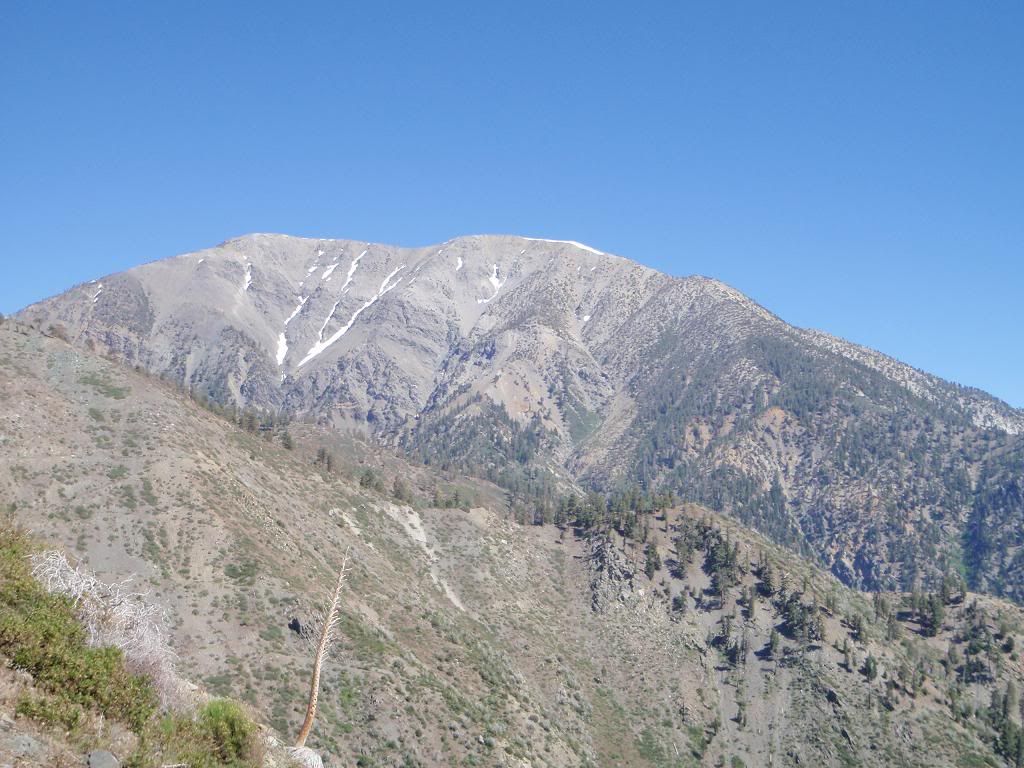

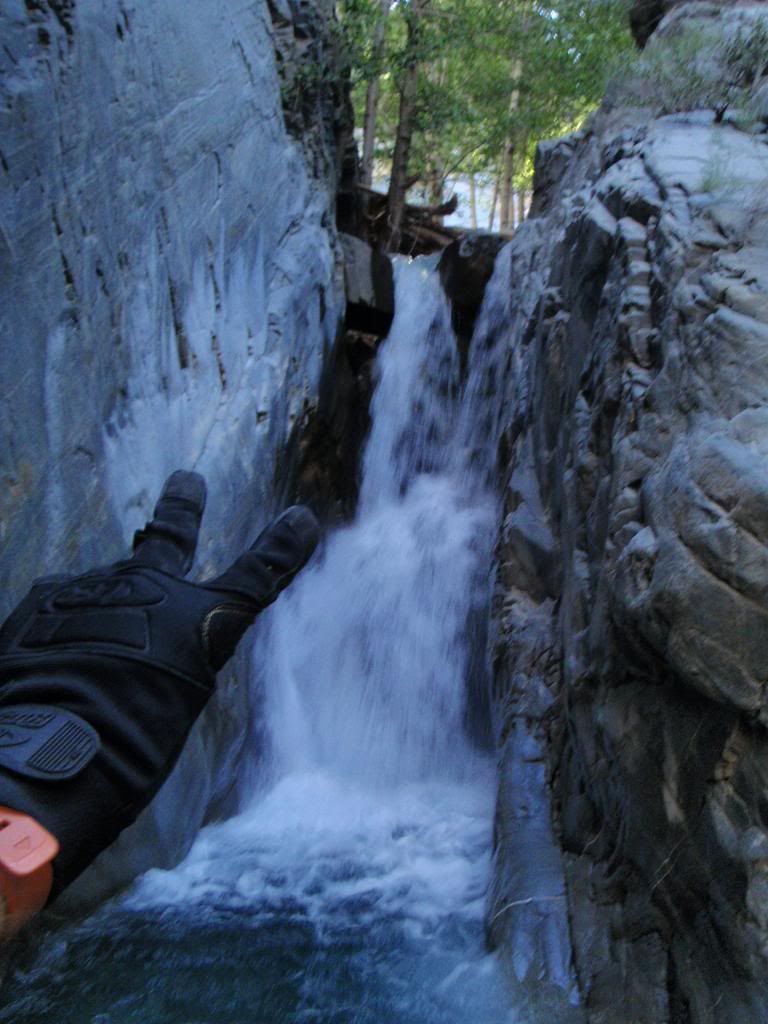
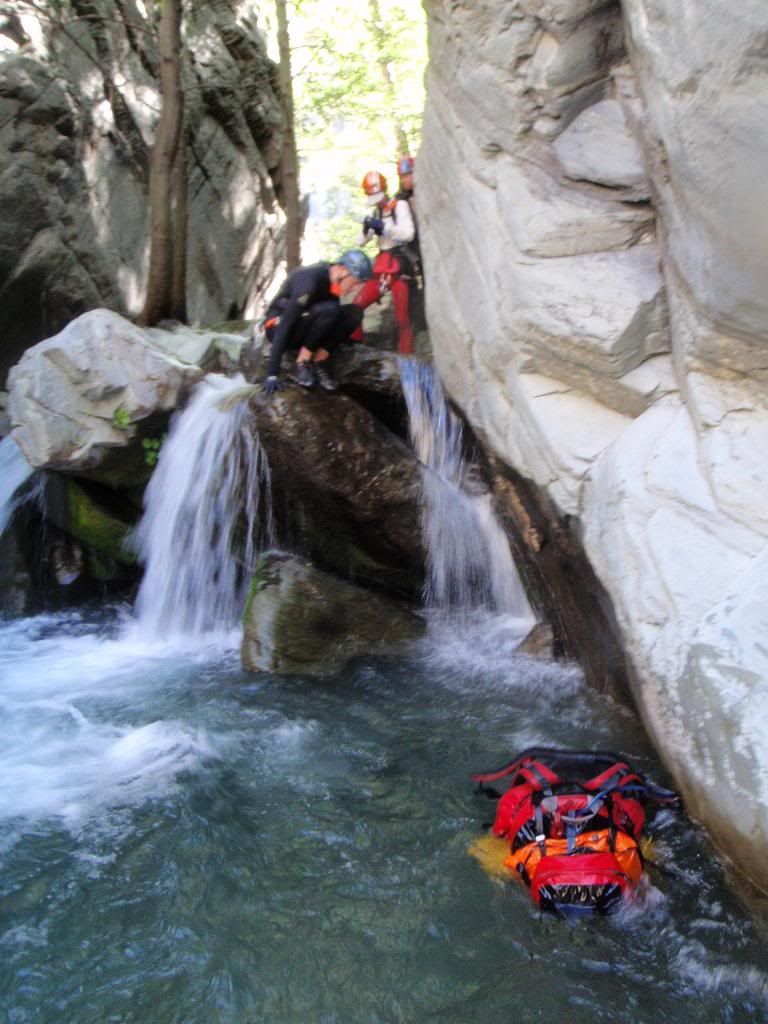
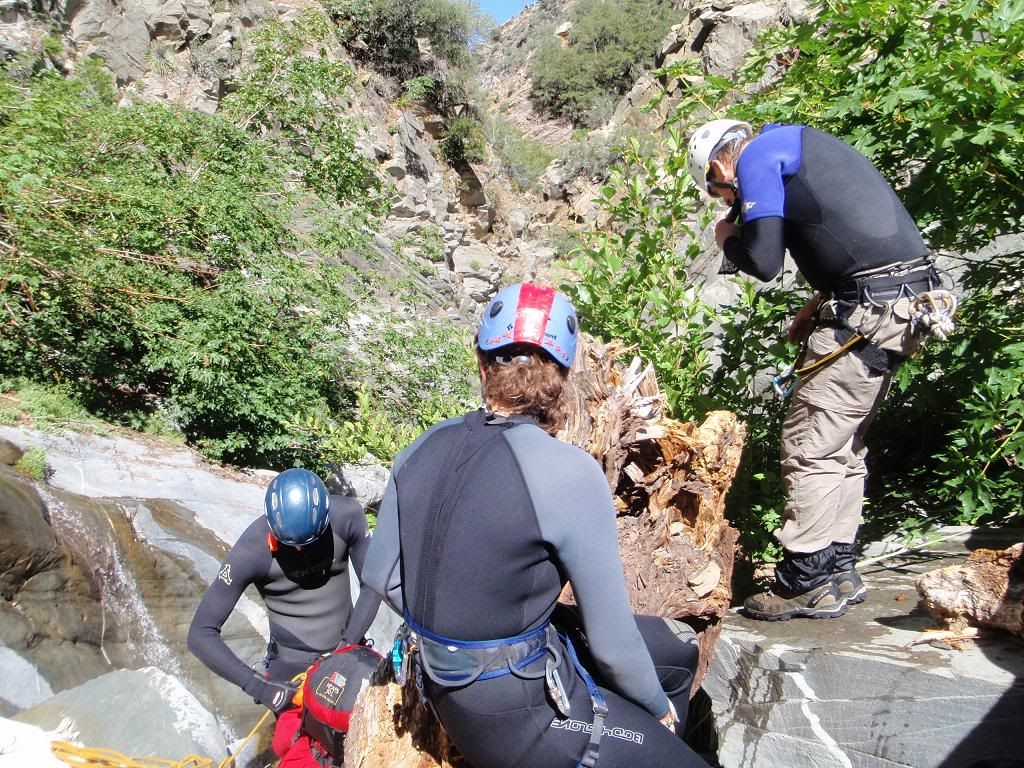
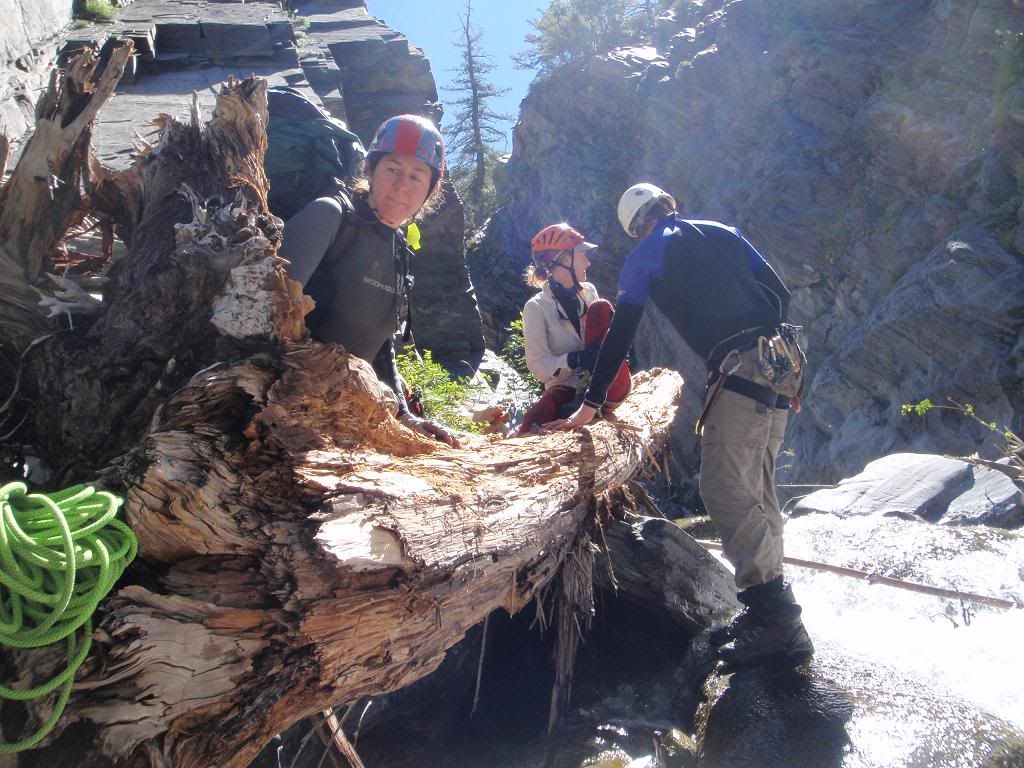

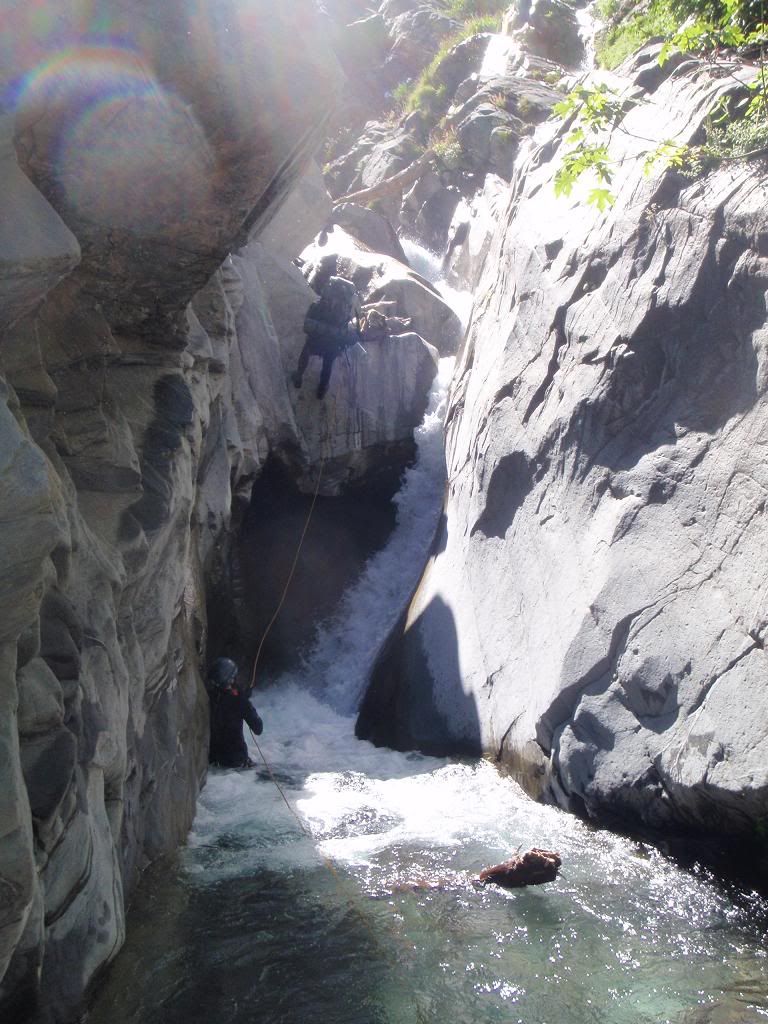
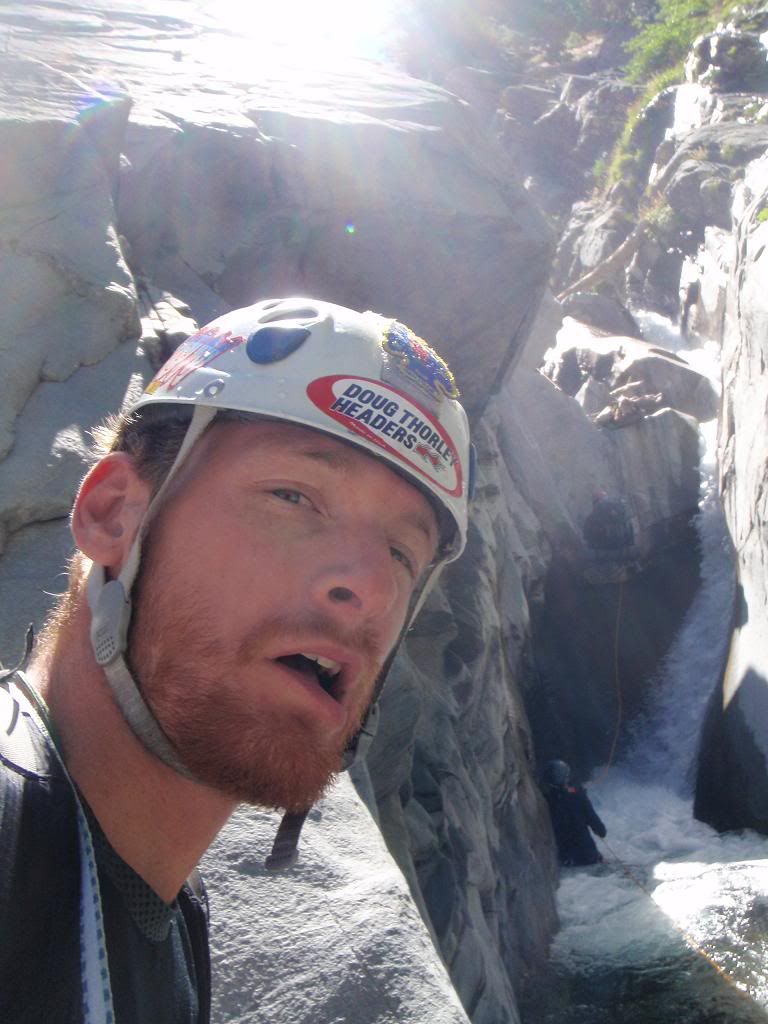
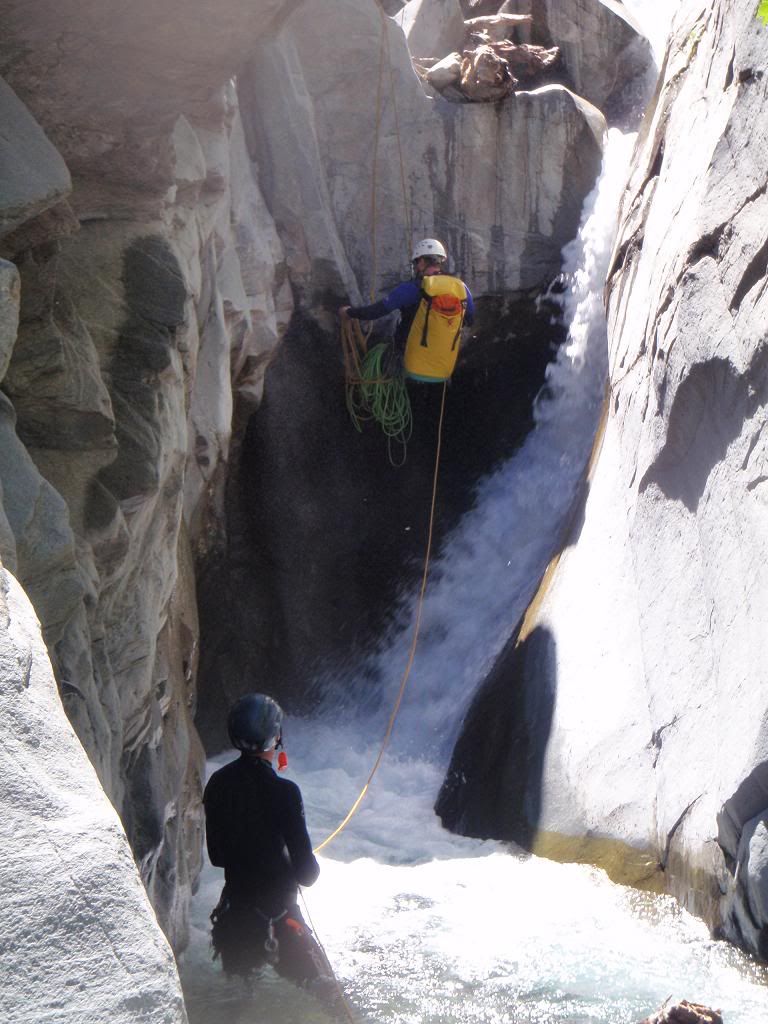
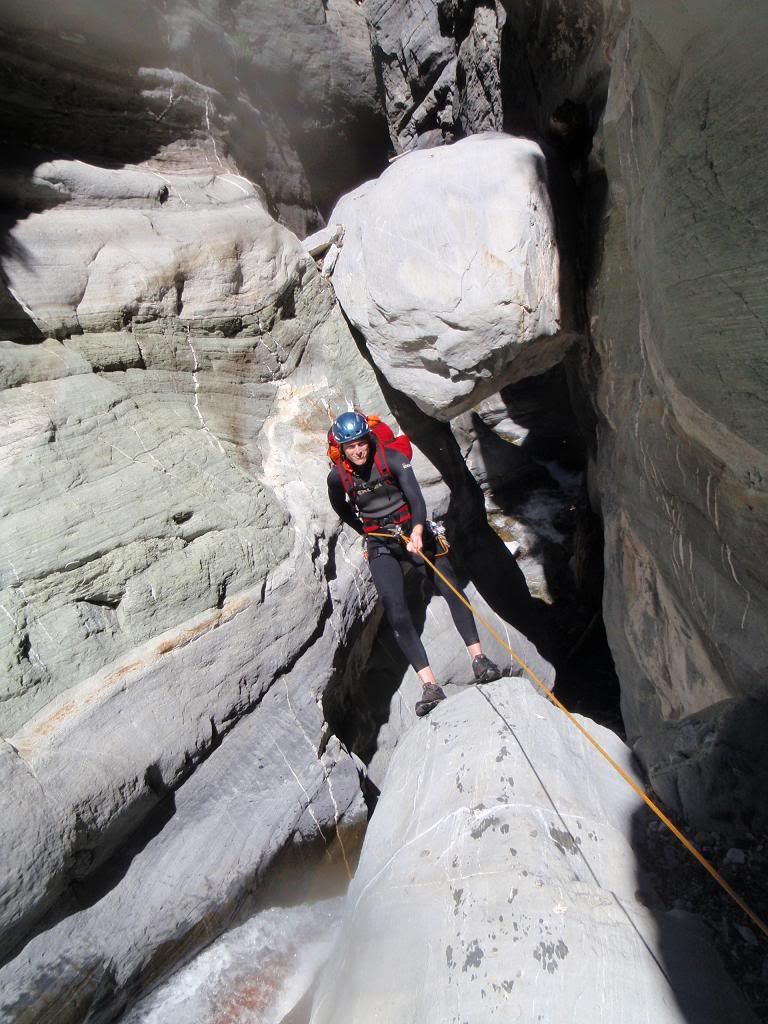
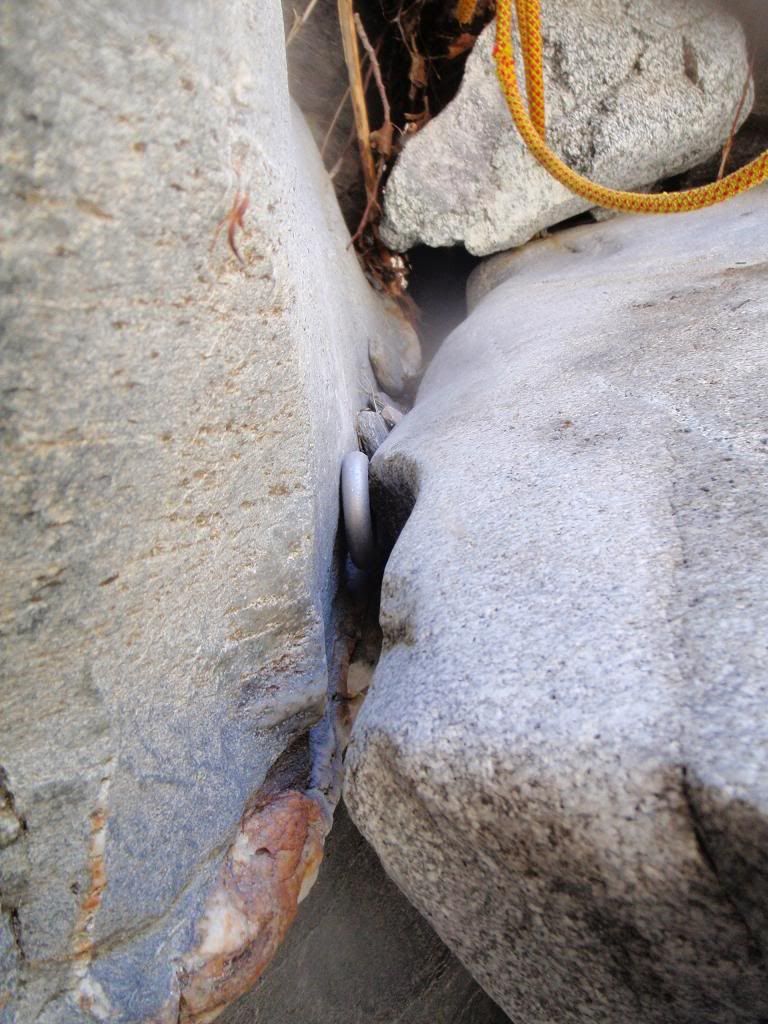
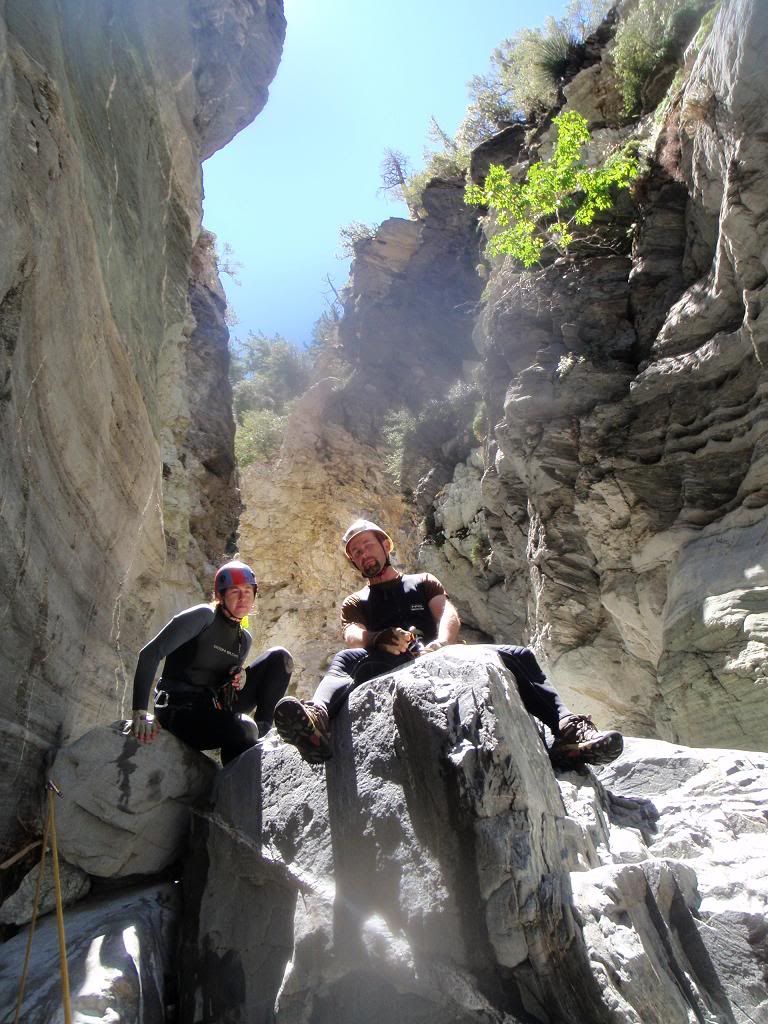
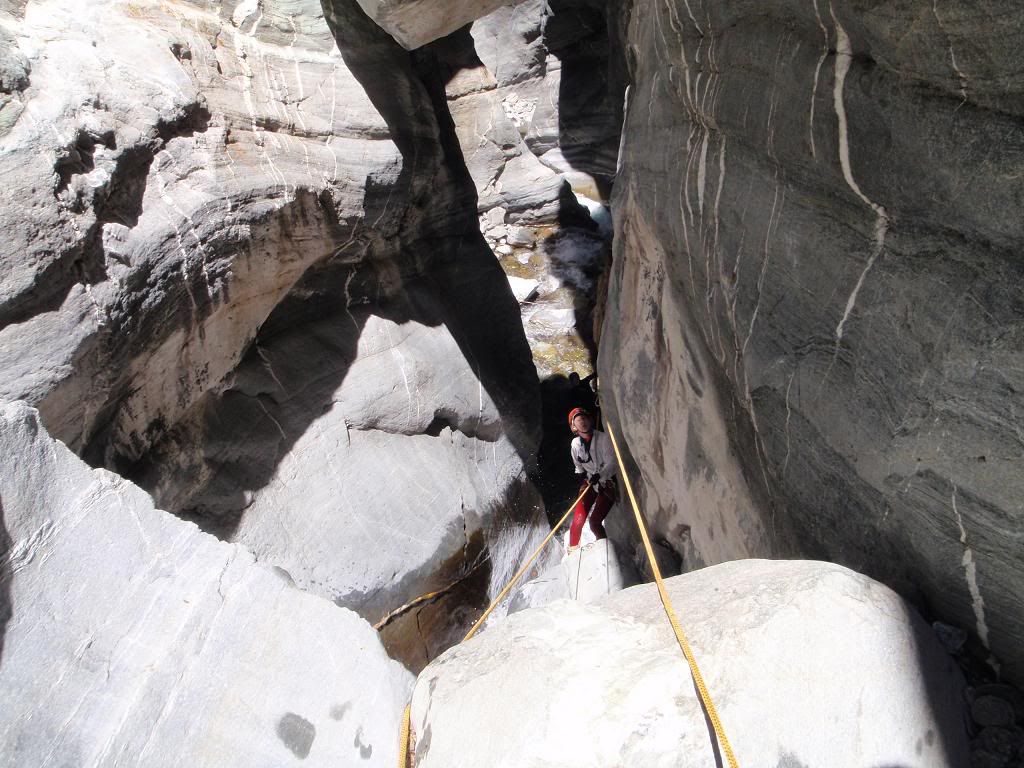
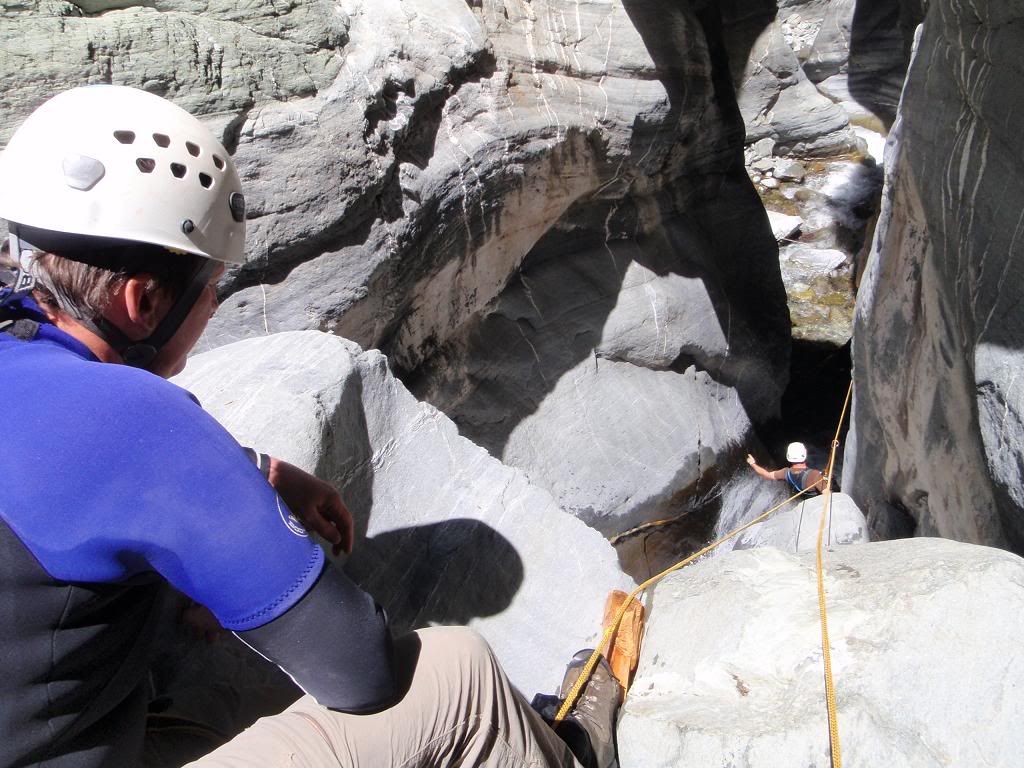
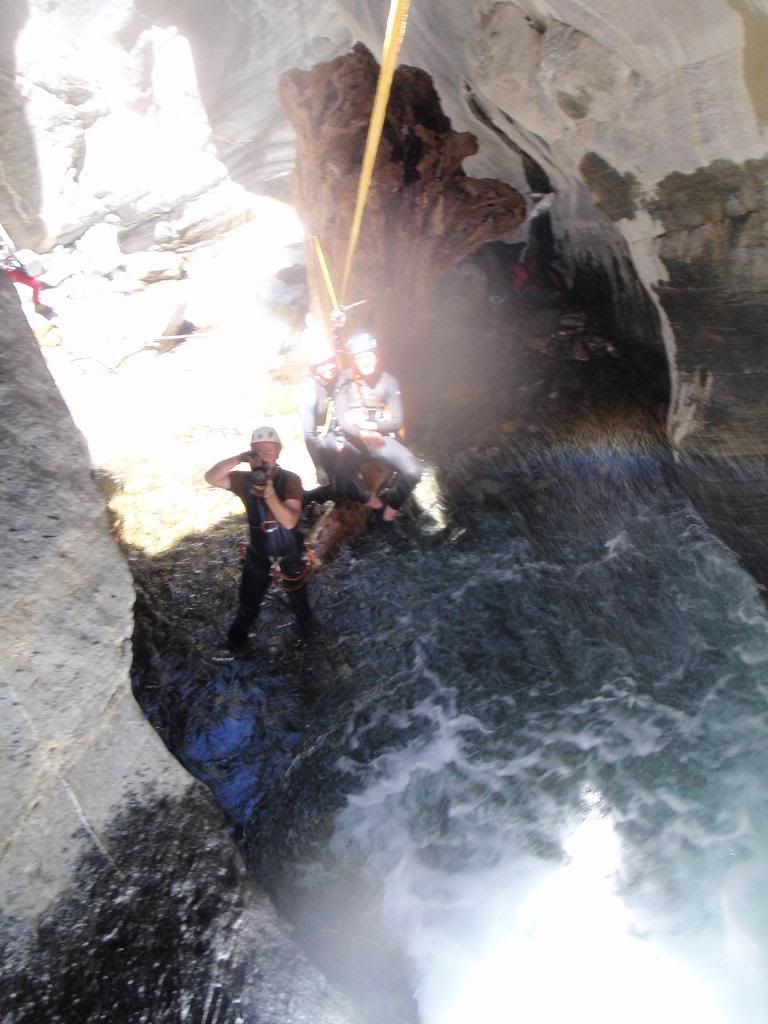
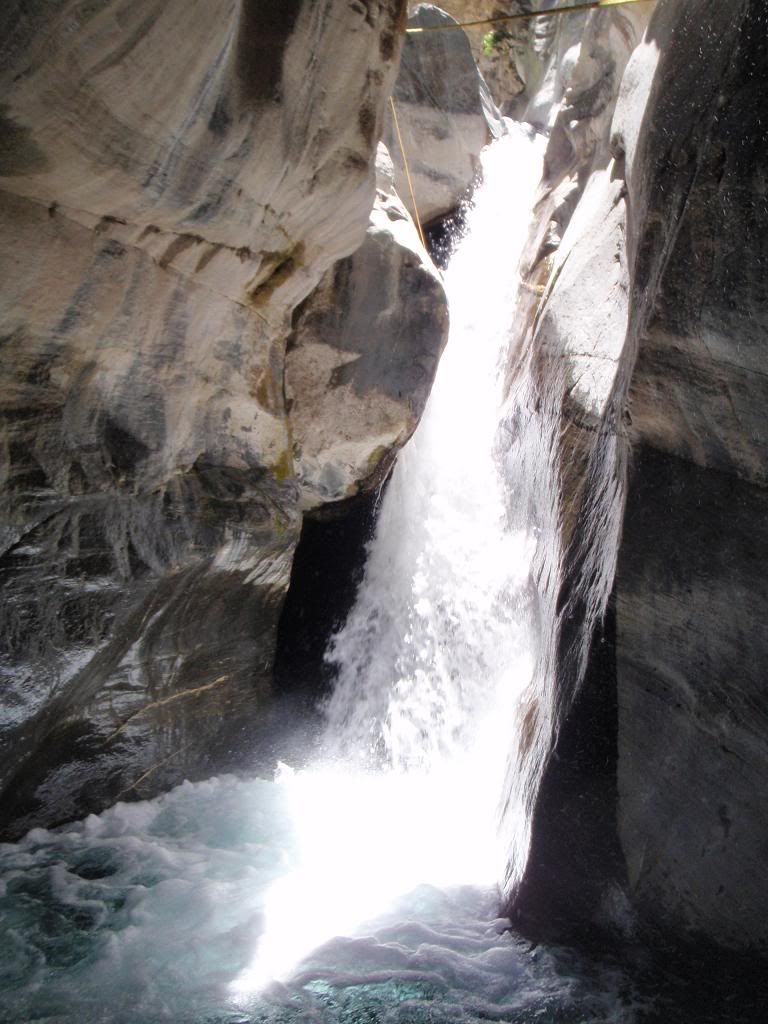
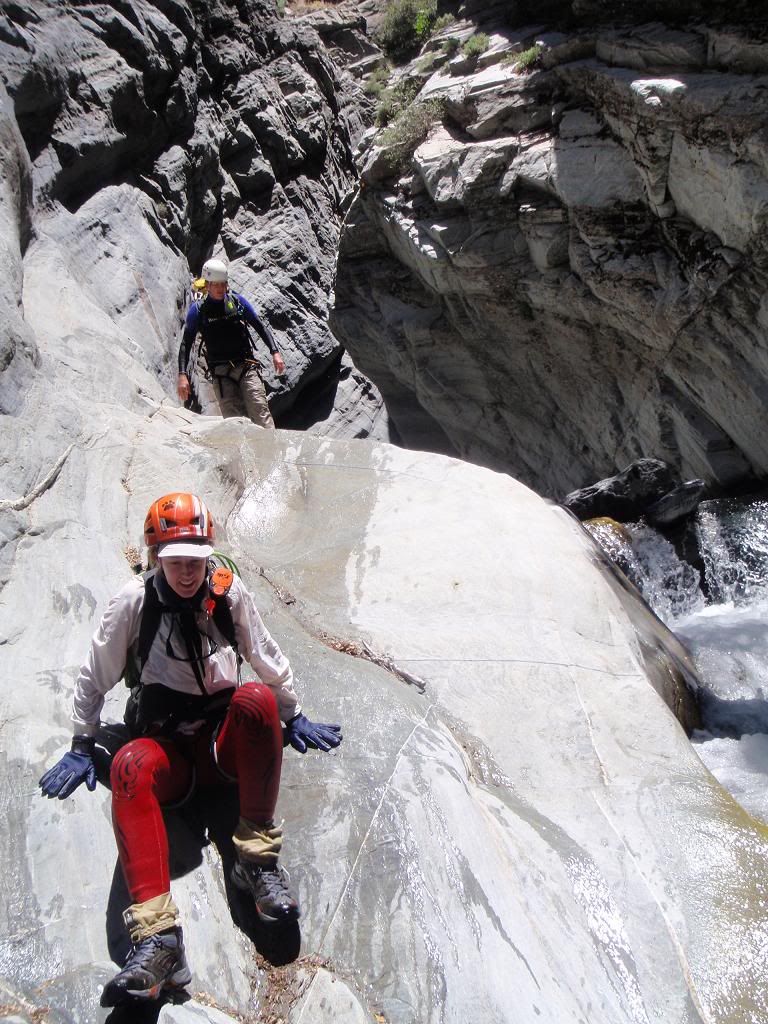
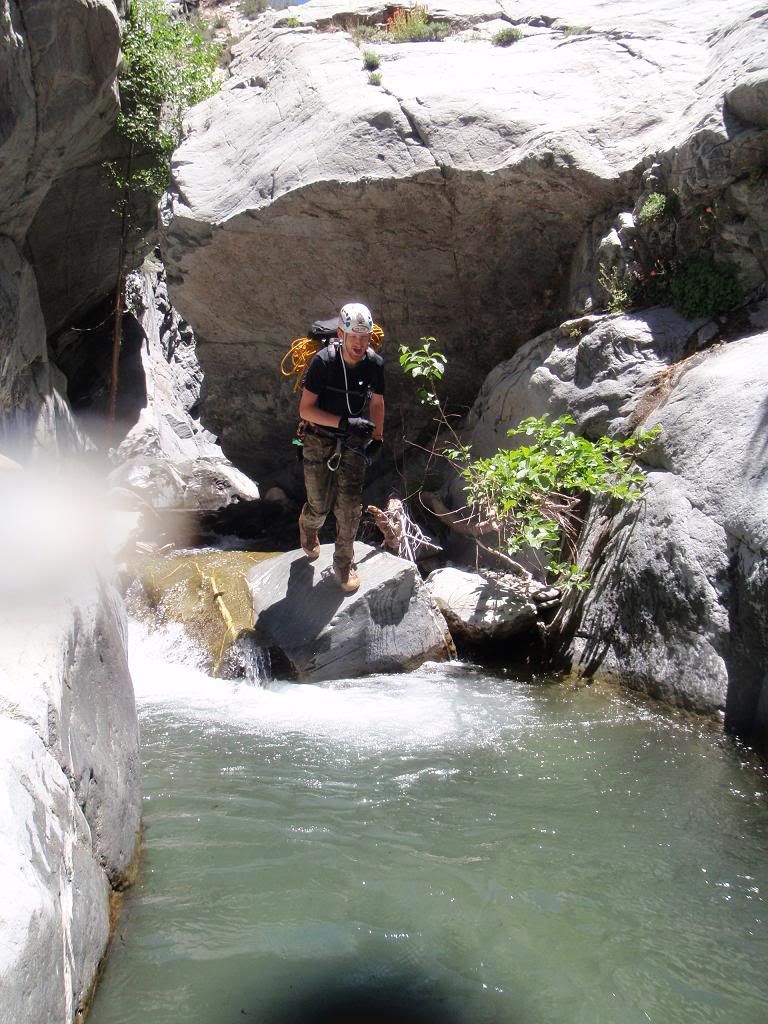
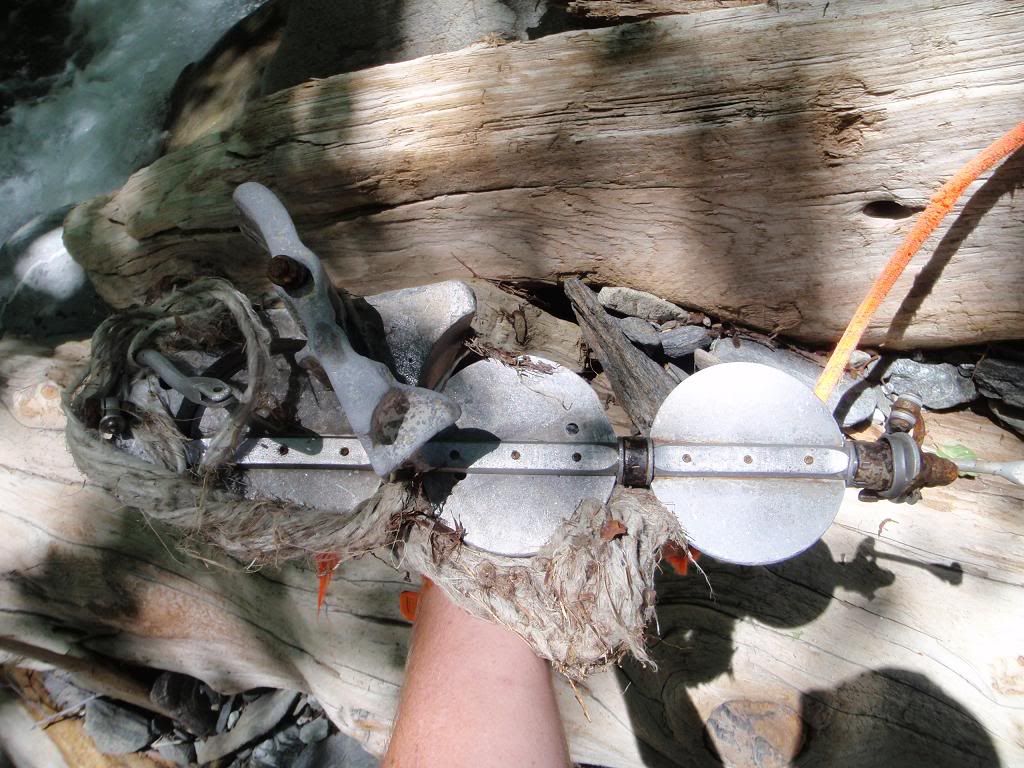
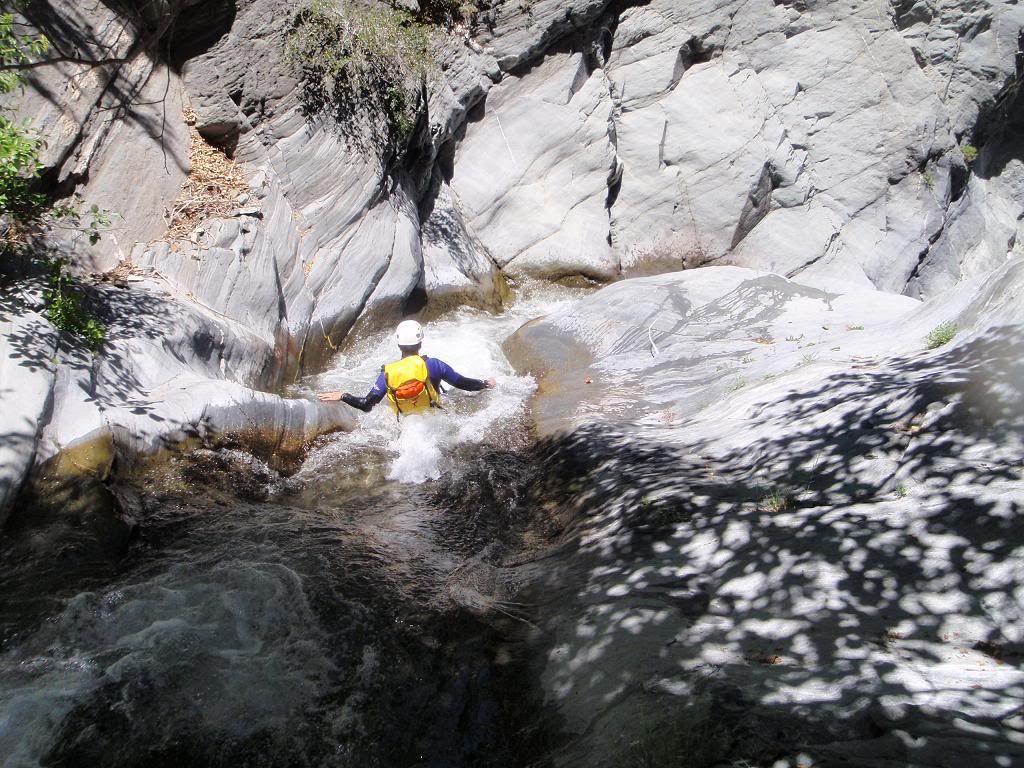
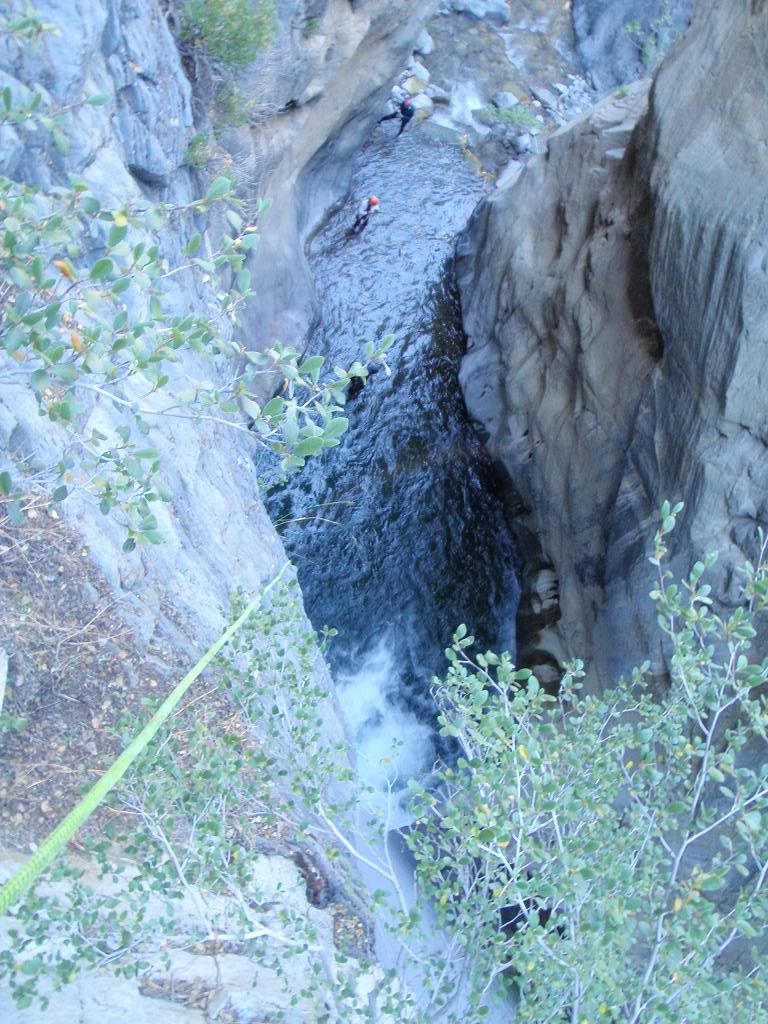
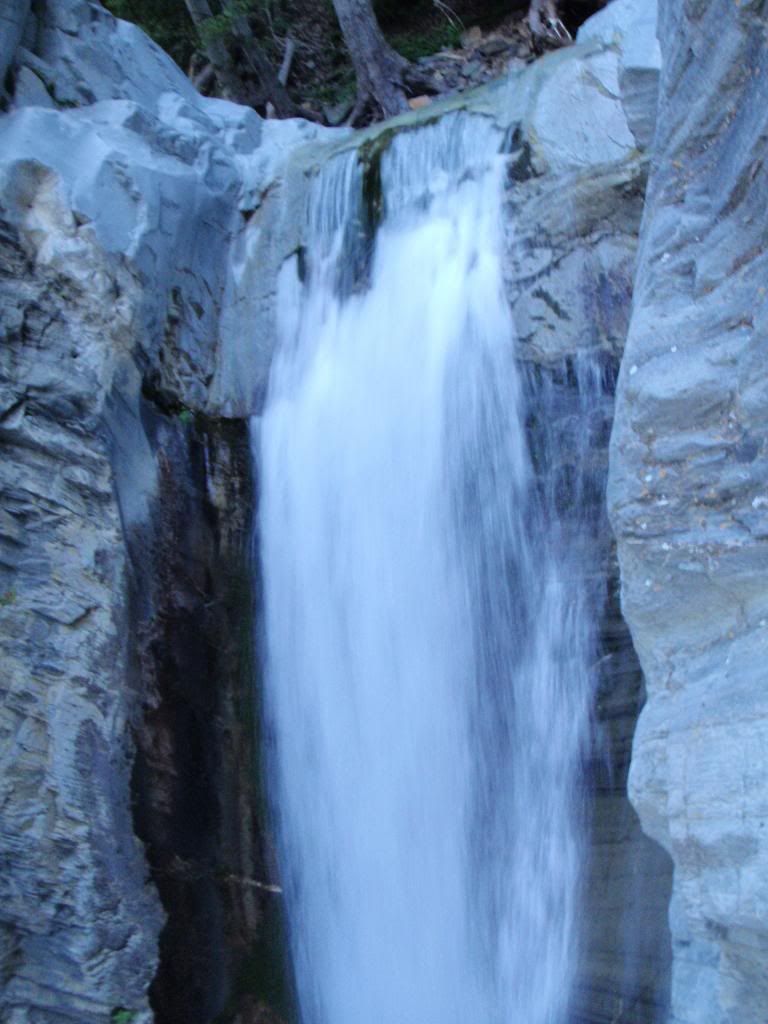

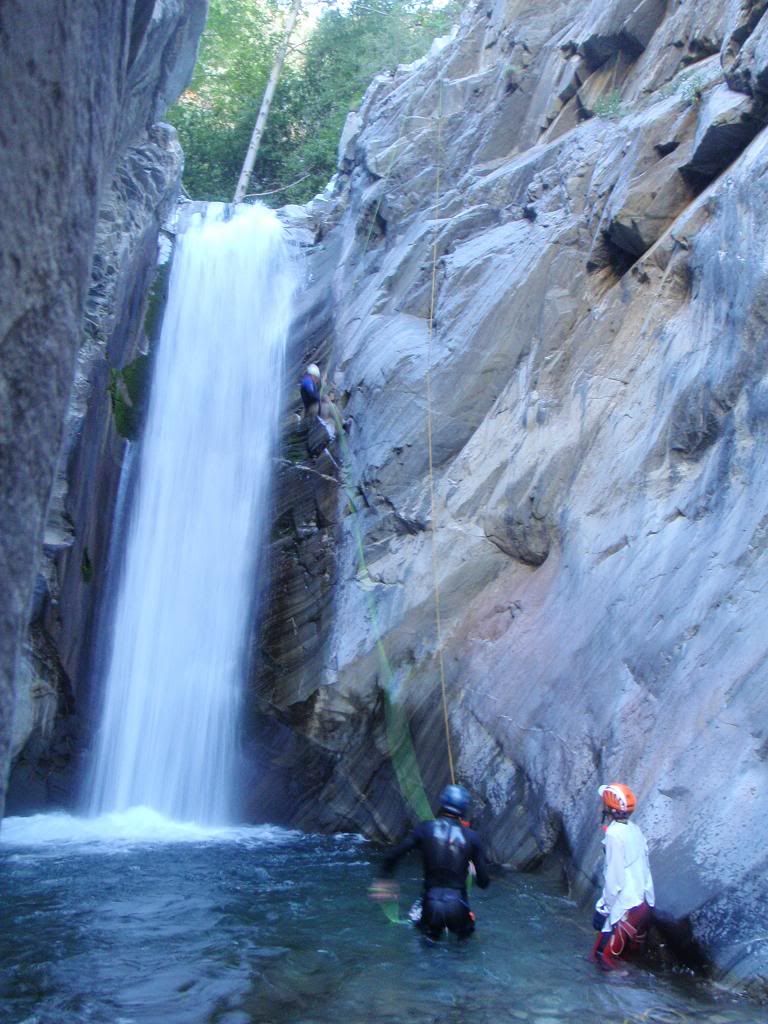

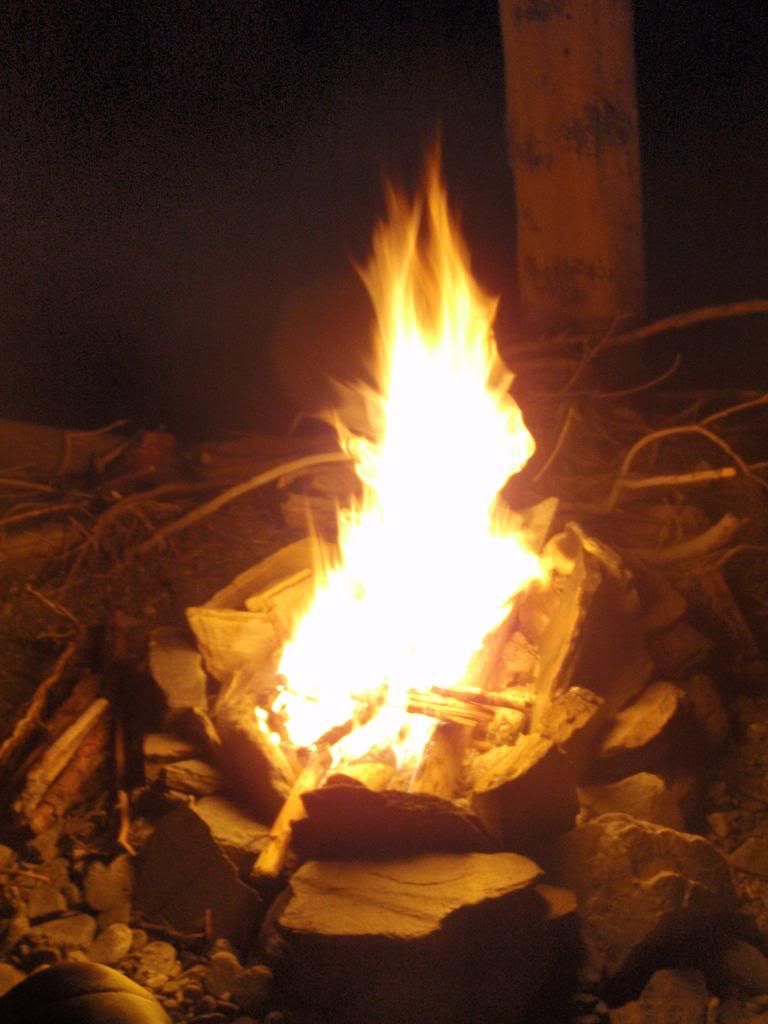
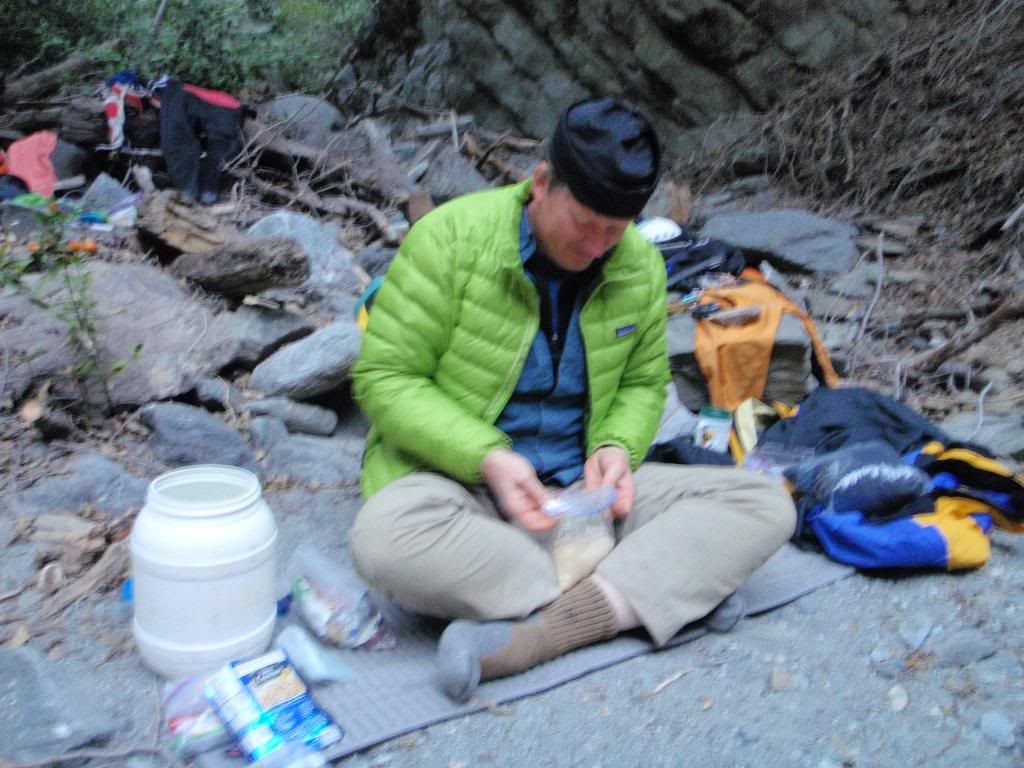
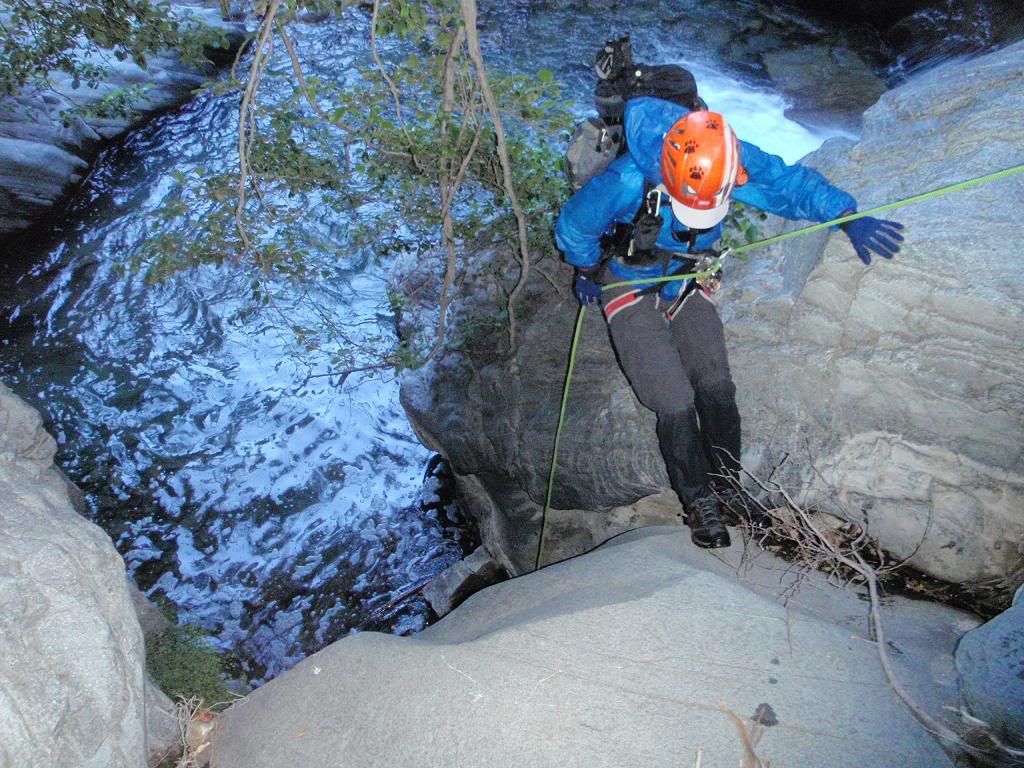
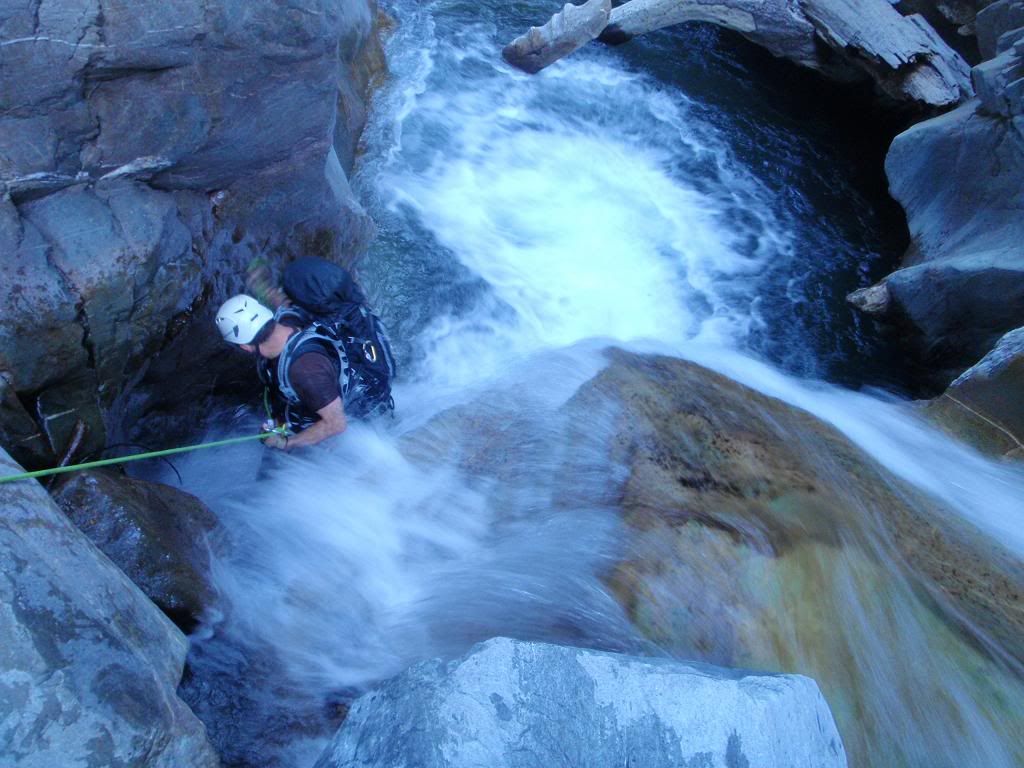
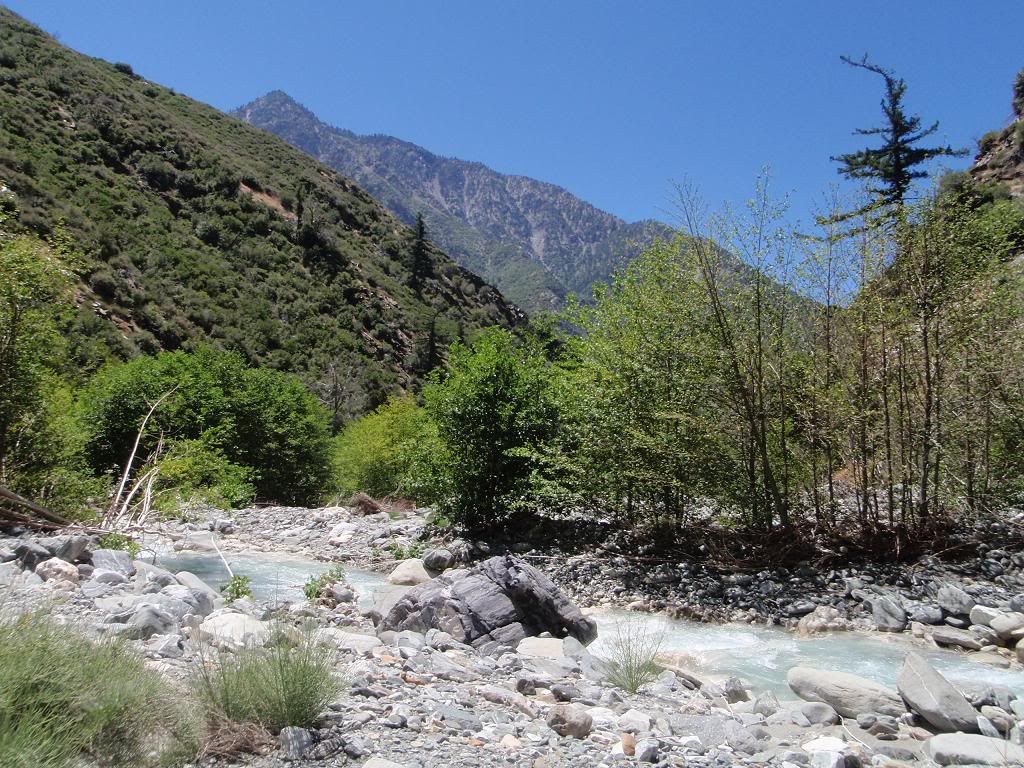
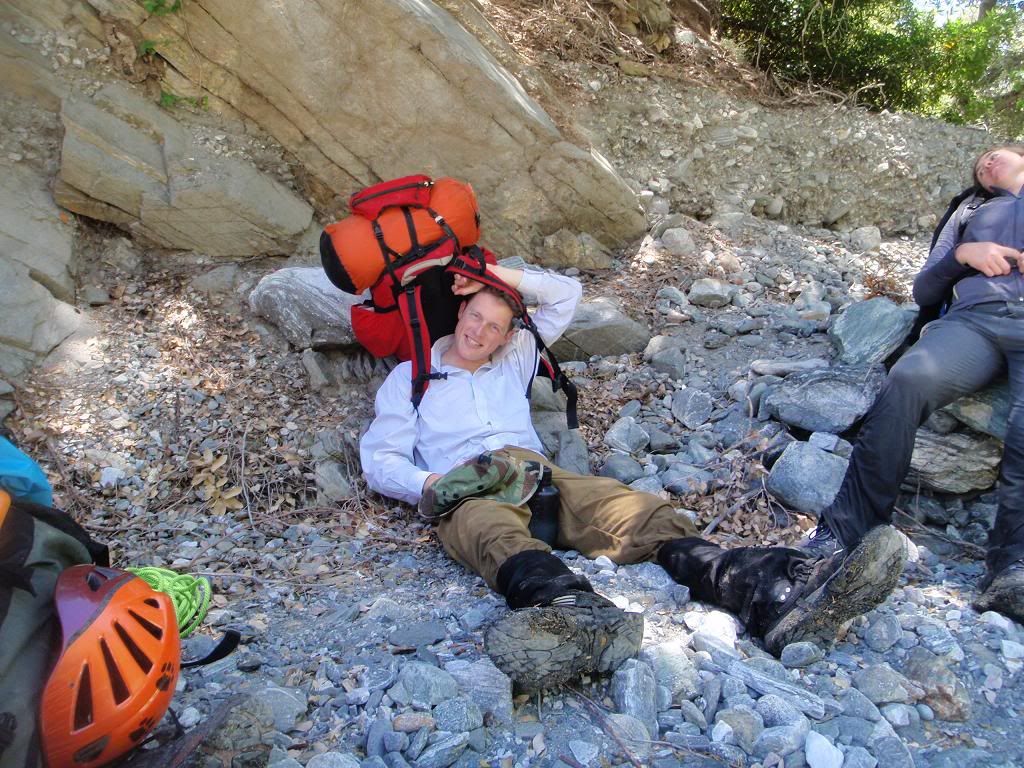













.jpg)
